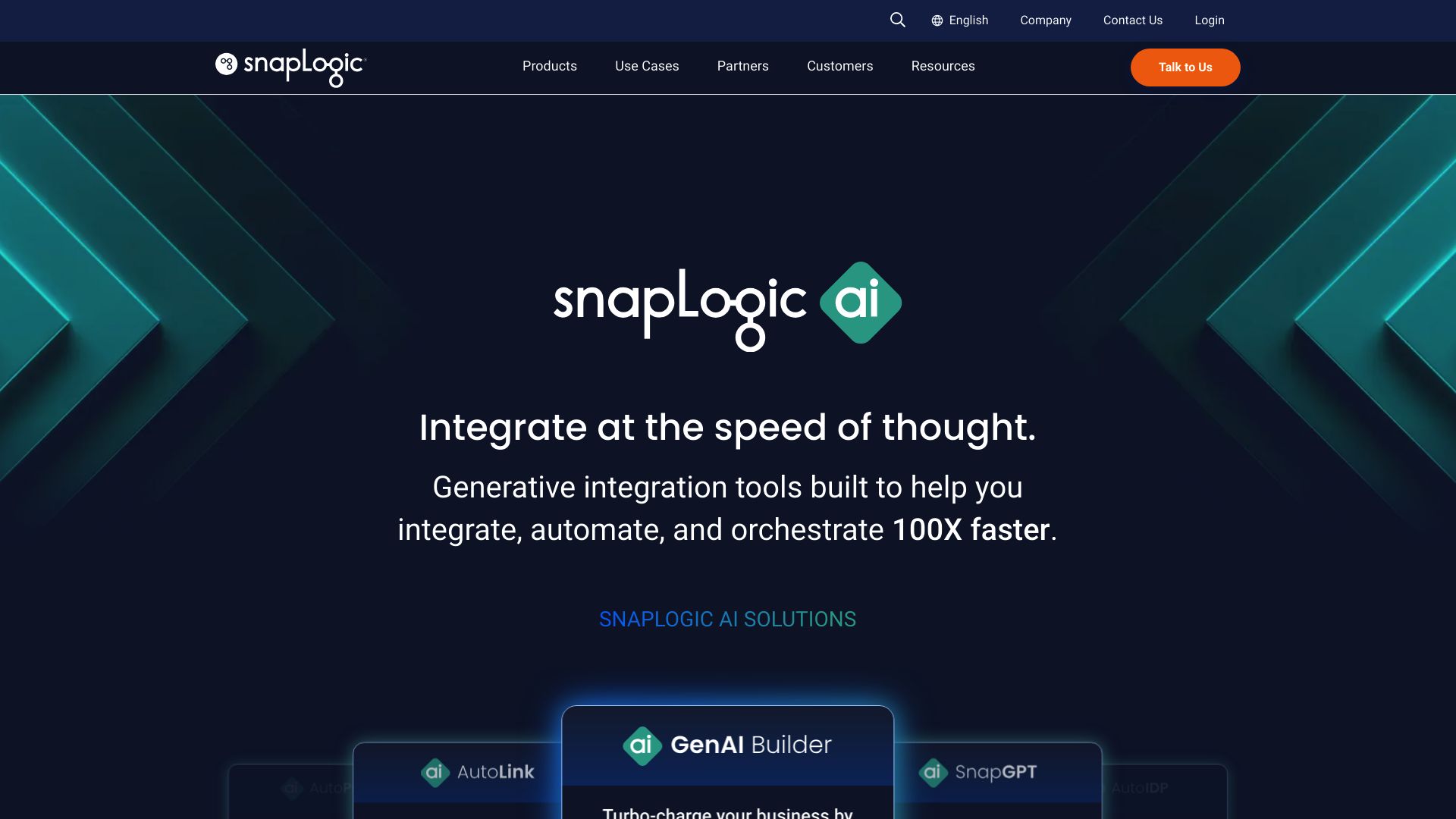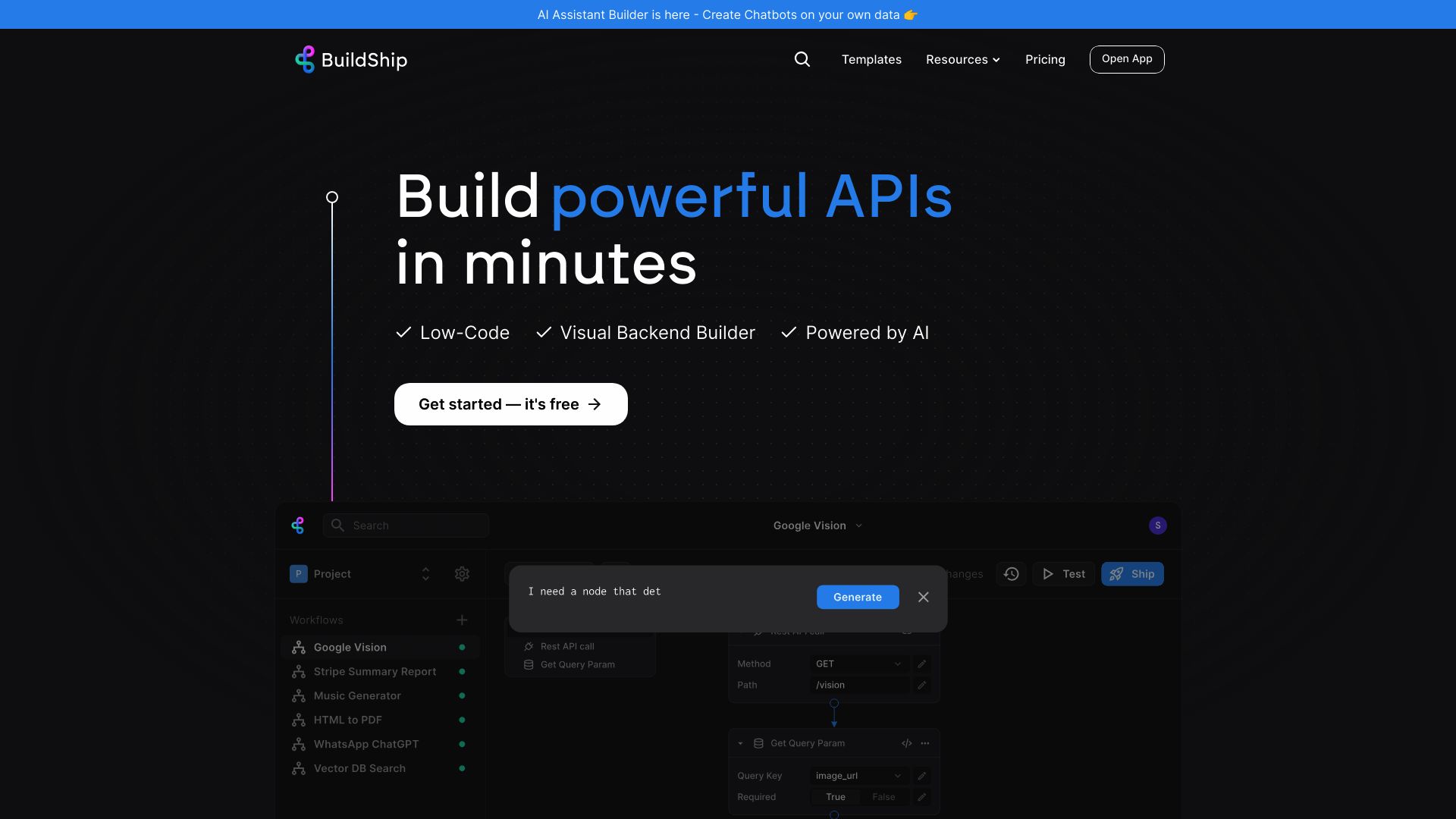SnapLogic AI vs. BuildShip: Comparing Enterprise Integration Solutions
The AI-powered integration landscape brims with innovative solutions, each vying to streamline complex workflows and enhance productivity. This comparison delves into the capabilities of SnapLogic AI vs. BuildShip, and SmythOS, three platforms at the forefront of this technological revolution. SnapLogic AI’s Intelligent Integration Platform tackles enterprise-scale challenges with AI-driven automation, while BuildShip empowers users with a visual no-code approach to backend development.
SmythOS emerges as a versatile contender, combining intuitive design with advanced AI features. This analysis examines how each platform addresses the needs of developers, business leaders, and non-technical users alike, exploring their strengths in integration, workflow automation, and AI application development. By dissecting core components, security measures, and unique selling points, readers will gain valuable insights to inform their choice of AI-powered integration solution.
snapLogic AI Overview
snapLogic AI delivers an Intelligent Integration Platform (IIP) that harnesses AI-powered workflows to streamline IT integration projects. The platform caters to both expert developers and citizen integrators, offering a unified, scalable solution for managing application and data integration across on-premises, cloud, and hybrid environments.


SnapLogic’s AI capabilities shine through features like Iris AI technology, which provides intelligent recommendations for building data pipelines with high accuracy. The platform’s self-service interface, built on HTML5, empowers users from various backgrounds to create and manage integrations without extensive coding knowledge.
snapLogic AI delivers an Intelligent Integration Platform (IIP) that harnesses AI-powered workflows to streamline IT integration projects.
At its core, snapLogic AI excels in comprehensive integration support. The platform handles a wide array of data types and sources, including structured and unstructured data, as well as batch, real-time, and streaming data. ’Snaps’, snapLogic’s integration connectors, facilitate seamless connections between SaaS applications, on-premises systems, and diverse data sources.
SnapLogic leverages Amazon’s Elastic Compute Cloud (EC2) infrastructure to ensure scalability, allowing enterprises to optimize their integration processes based on specific needs. This flexibility extends to deployment options, with support for both cloud and on-premises implementations.
The platform has recently introduced SnapGPT and GenAI Builder, tools that enable no-code development of AI applications. These innovations allow employees to create AI models and chatbots using natural language prompts, further democratizing AI capabilities within organizations.
SnapGPT and GenAI Builder… enable no-code development of AI applications… allow employees to create AI models and chatbots using natural language prompts.
While snapLogic AI offers a robust set of features, users should be aware of potential challenges. Integration with legacy systems may require additional expertise, and the platform’s extensive capabilities might present a learning curve for some users. Additionally, as with any AI-driven solution, careful attention must be paid to data privacy and security concerns, especially when handling sensitive information.
BuildShip Overview
BuildShip offers a visual no-code platform for creating, testing, and deploying backend workflows and APIs. The platform empowers users to build complex automations without extensive coding knowledge, accelerating development processes tenfold.


BuildShip features a drag-and-drop interface with prebuilt nodes and AI-generated custom nodes. Users can integrate various data sources, APIs, and AI models to create sophisticated workflows. The platform supports custom logic in JavaScript/TypeScript, enabling developers to fine-tune their automations.
BuildShip offers a visual no-code platform for creating, testing, and deploying backend workflows and APIs… accelerating development processes tenfold.
Key features include robust testing capabilities for individual nodes and entire workflows, allowing iterative development and refinement. BuildShip enables deployment of workflows as production-grade APIs, seamlessly integrating into existing applications. The platform also offers scheduling options for automatic workflow execution, enhancing efficiency in repetitive tasks.
BuildShip leverages AI to streamline development further. Its AI autofill feature uses natural language prompts to suggest inputs, accelerating the workflow creation process. A comprehensive template library provides starting points for common use cases, reducing development time for standard automations.
Security remains a priority, with BuildShip offering secure storage for API keys and secrets. This feature ensures sensitive information remains protected throughout the development and deployment processes. While BuildShip excels in many areas, it lacks some advanced features like a hosted vector database or YouTube transcript crawling capabilities, which may limit its applicability in certain specialized scenarios.
Feature Comparison
SnapLogic AI and BuildShip offer distinct approaches to integration and workflow automation, with significant feature gaps in core components and security. SnapLogic AI excels in comprehensive integration support, leveraging AI-powered workflows for enterprise-scale data management. Its Intelligent Integration Platform (IIP) automates complex IT integration projects across on-premises, cloud, and hybrid environments. BuildShip, in contrast, focuses on visual no-code development for backend workflows and APIs, prioritizing ease of use for rapid prototyping and deployment.
In core components, SnapLogic AI’s extensive library of pre-built connectors (Snaps) outpaces BuildShip’s offerings, enabling seamless integration with a wider array of data sources and applications. SnapLogic’s Iris AI technology provides intelligent recommendations for building data pipelines, a feature absent in BuildShip. However, BuildShip’s strength lies in its AI autofill capability, which uses natural language prompts to suggest inputs during workflow creation, streamlining the development process for less technical users.
Regarding security, SnapLogic AI demonstrates a more robust approach, with features like data encryption and IP control that are essential for enterprise-level deployments. BuildShip offers secure storage for API keys and secrets but lacks the comprehensive security measures provided by SnapLogic. While both platforms support OAuth for authentication, SnapLogic’s additional security features make it better suited for organizations with stringent data protection requirements.
Feature Comparison Table
| snapLogic AI | BuildShip | SmythOS | |
|---|---|---|---|
| CORE FEATURES | |||
| Memory & Context | ❌ | ❌ | ✅ |
| Autonomous Agents | ✅ | ❌ | ✅ |
| Explainability & Transparency | ✅ | ❌ | ✅ |
| Multimodal | ✅ | ❌ | ✅ |
| Problem-Solving Capabilities | ✅ | ❌ | ✅ |
| Multi-Agent Collaboration | ✅ | ❌ | ✅ |
| Human-AI Interaction | ✅ | ❌ | ✅ |
| Audit Logs for Analytics | ✅ | ❌ | ✅ |
| Work as Team | ✅ | ❌ | ✅ |
| SECURITY | |||
| Constrained Alignment | ✅ | ❌ | ✅ |
| COMPONENTS | |||
| Foundation AIs | ❌ | ❌ | ✅ |
| Huggingface AIs | ❌ | ❌ | ✅ |
| Zapier APIs | ❌ | ❌ | ✅ |
| Classifiers | ❌ | ❌ | ✅ |
| Data Lakes | ✅ | ❌ | ✅ |
| DEPLOYMENT OPTIONS (EMBODIMENTS) | |||
| Staging Domains | ❌ | ❌ | ✅ |
| Production Domains | ❌ | ❌ | ✅ |
| Deploy as Site Chat | ❌ | ❌ | ✅ |
| Deploy as GPT | ❌ | ❌ | ✅ |
| DATA LAKE SUPPORT | |||
| Hosted Vector Database | ❌ | ❌ | ✅ |
| Sitemap Crawler | ❌ | ❌ | ✅ |
| YouTube Transcript Crawler | ❌ | ❌ | ✅ |
| URL Crawler | ❌ | ❌ | ✅ |
| PDF Support | ✅ | ❌ | ✅ |
| Word File Support | ✅ | ❌ | ✅ |
| TXT File Support | ✅ | ❌ | ✅ |
Best Alternative to snapLogic AI and BuildShip
SmythOS emerges as the superior alternative to snapLogic AI and BuildShip, offering a comprehensive platform for AI agent development and deployment. We’ve designed SmythOS to address the limitations of existing solutions while providing unparalleled flexibility and power.
Our platform excels in ease of use, featuring an intuitive drag-and-drop interface that allows users of all skill levels to create sophisticated AI agents without extensive coding knowledge. Unlike snapLogic AI and BuildShip, SmythOS offers a truly no-code experience, democratizing AI development across organizations.
SmythOS offers a truly no-code experience, democratizing AI development across organizations.
SmythOS boasts an extensive feature set that outpaces both snapLogic AI and BuildShip. We provide robust support for memory and context, enabling AI agents to maintain coherent, long-term interactions. Our platform also facilitates multi-agent collaboration, allowing teams of AI agents to work together on complex tasks — a capability notably absent in BuildShip’s offering.
Where SmythOS truly shines is in its unlimited use cases. While snapLogic AI focuses primarily on enterprise data integration and BuildShip targets backend workflow automation, our platform supports a vast array of applications. From chatbots and virtual assistants to complex data analysis and decision-making systems, SmythOS adapts to virtually any AI need. This versatility, combined with our advanced deployment options — including API endpoints, webhooks, and integration with popular platforms like GPT — positions SmythOS as the most flexible and powerful choice for AI agent development.
SmythOS adapts to virtually any AI need… positioning SmythOS as the most flexible and powerful choice for AI agent development.
By choosing SmythOS, users gain access to cutting-edge AI capabilities, unmatched scalability, and a future-proof platform that evolves with the rapidly changing AI landscape. Our commitment to innovation ensures that SmythOS will continue to lead the way in AI agent development, providing businesses and developers with the tools they need to stay ahead in an AI-driven world.
Conclusion
SnapLogic AI and BuildShip offer powerful solutions for integration and workflow automation, each with distinct strengths. SnapLogic AI excels in enterprise-scale integration, leveraging AI to streamline complex IT projects across diverse environments. Its comprehensive security features and extensive pre-built connectors make it ideal for large organizations with intricate data ecosystems. BuildShip, with its intuitive visual interface and AI-assisted development tools, caters to users seeking rapid prototyping and deployment of backend workflows and APIs.
While both platforms have their merits, SmythOS emerges as the superior choice, combining the best of both worlds and offering additional capabilities. SmythOS’s drag-and-drop interface rivals BuildShip’s ease of use, while its AI-powered workflow creation and extensive integration ecosystem match and exceed SnapLogic’s offerings. The platform’s ability to deploy AI agents across multiple environments, from APIs to chatbots, provides unparalleled flexibility. SmythOS also stands out with its support for multi-agent collaboration, advanced problem-solving capabilities, and robust security features, making it suitable for businesses of all sizes.
For organizations looking to harness the full potential of AI-driven automation and integration, SmythOS offers a compelling solution. Its comprehensive feature set, including hosted vector databases, multimodal support, and seamless API integrations, positions it as a versatile and powerful platform for modern businesses. We invite you to explore our diverse range of AI-powered agent templates and experience firsthand how SmythOS can transform your workflow. Get started with SmythOS today and join the AI revolution that’s reshaping the future of work.
Last updated:
Disclaimer: The information presented in this article is for general informational purposes only and is provided as is. While we strive to keep the content up-to-date and accurate, we make no representations or warranties of any kind, express or implied, about the completeness, accuracy, reliability, suitability, or availability of the information contained in this article.
Any reliance you place on such information is strictly at your own risk. We reserve the right to make additions, deletions, or modifications to the contents of this article at any time without prior notice.
In no event will we be liable for any loss or damage including without limitation, indirect or consequential loss or damage, or any loss or damage whatsoever arising from loss of data, profits, or any other loss not specified herein arising out of, or in connection with, the use of this article.
Despite our best efforts, this article may contain oversights, errors, or omissions. If you notice any inaccuracies or have concerns about the content, please report them through our content feedback form. Your input helps us maintain the quality and reliability of our information.
